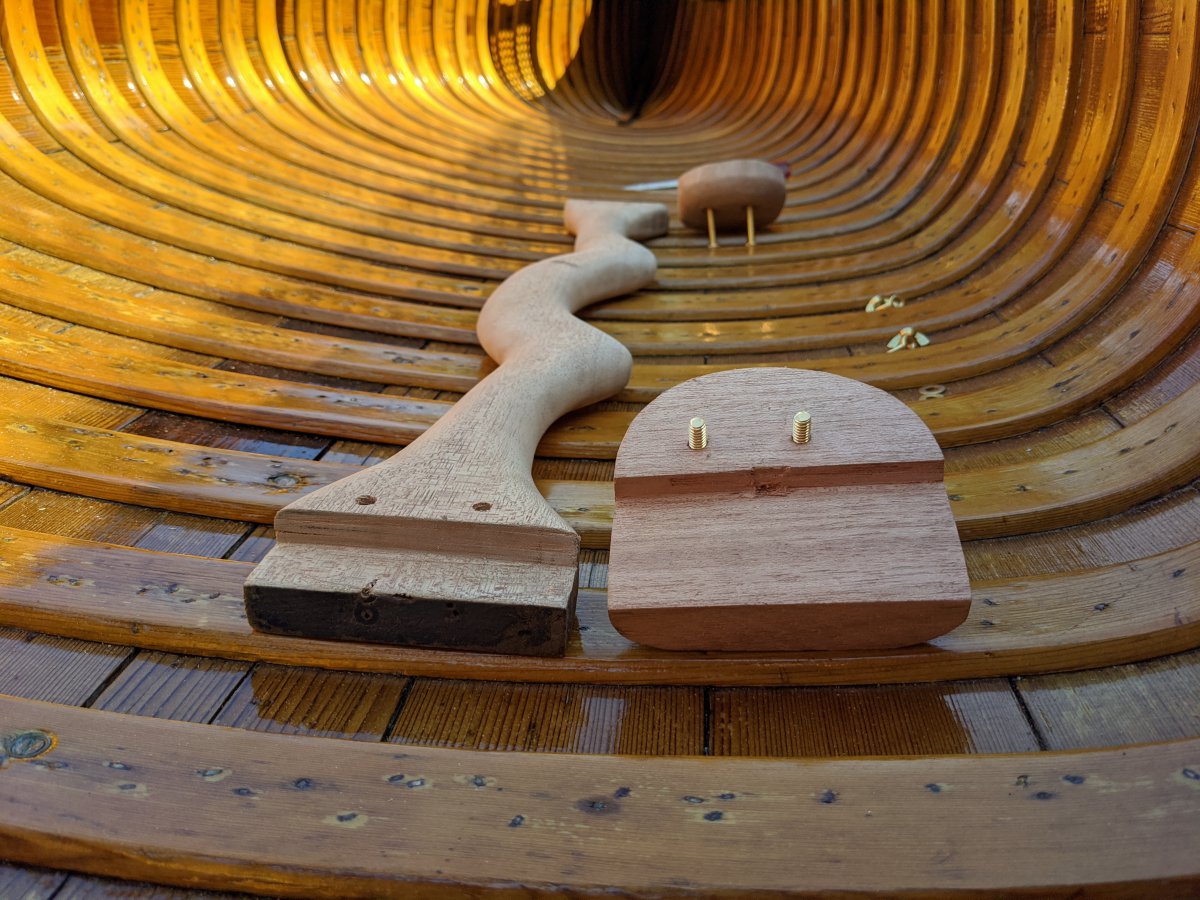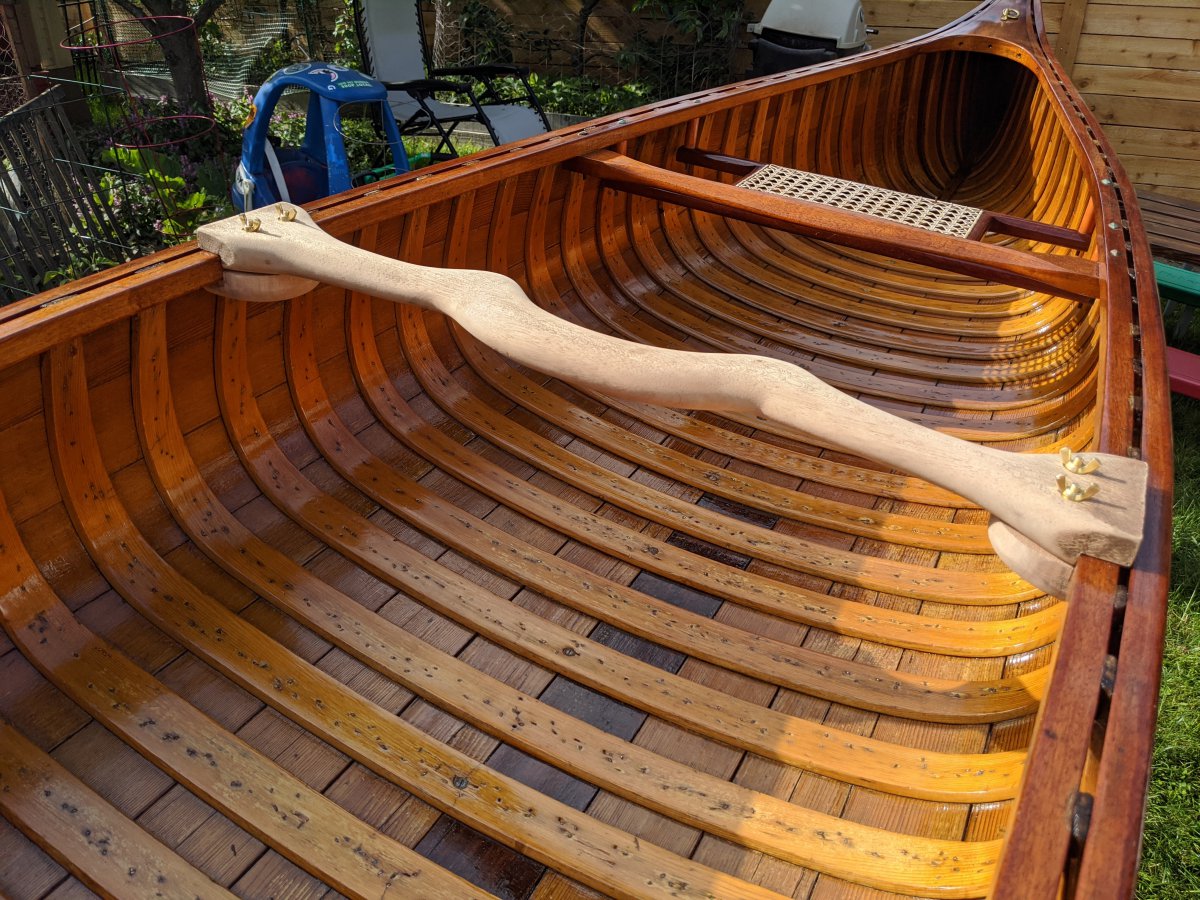Bo Saxbe
Curious about Wooden Canoes
Many thanks to Jim Clearwater for the idea.
I will be solo portaging my new boat and was distressed about no center thwart. I really didn't want to drill any new holes. Pleased with the way it turned out.
I was able to find some Philippino mahogany at my favorite lumber store. It's got good grain but I'm pretty sure it'll be very different looking from the reddish Honduran wood if I just varnish it. Anyone tried to color match a stain to the old Old Town AA grade trim?
It doesn't necessarily have to match. Perhaps making it obviously different is better - so it doesn't look like I tried to match it and failed...
I'll probably glue a little felt to the contact surfaces after I've gotten the wood finished to protect the gunnels.
I will be solo portaging my new boat and was distressed about no center thwart. I really didn't want to drill any new holes. Pleased with the way it turned out.
I was able to find some Philippino mahogany at my favorite lumber store. It's got good grain but I'm pretty sure it'll be very different looking from the reddish Honduran wood if I just varnish it. Anyone tried to color match a stain to the old Old Town AA grade trim?
It doesn't necessarily have to match. Perhaps making it obviously different is better - so it doesn't look like I tried to match it and failed...
I'll probably glue a little felt to the contact surfaces after I've gotten the wood finished to protect the gunnels.
Last edited:








